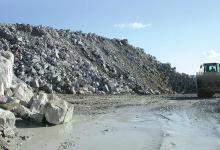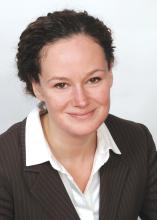
With increasing numbers of mining and minerals companies taking advantage of renewables, Aggregates Business Europe looks at two UK-based companies who have been leading the way
In previous editions, renewables lawyer Sonya Bedford has discussed the legal issues (whether contractual, regulatory or relating to EU and member states’ competition laws) which arise from the rush to renewables, as well as the potential economic and social benefits to aggregates operators maximising the benefits of the earth’s natural resources.
And with increasing numbers of mining and minerals companies taking advantage, here are two UK-based companies (one large, one small) who have been leading the way.
“We’re absolutely thrilled that our site is now home to one of the UK’s first solar farms,” says Bernard Ballard, marketing and planning director for the
The disused tin mine, Wheal Jane, near Truro, is officially the south-west’s first operational solar farm to be connected to the grid, generating electricity for 400 homes using more than 5,600 solar panels. It is estimated that it will save over 737tonnes of CO2 emissions every year.
The 7.2 acre (3 hectares) site was connected to the grid by the UK-based solar developer
Bernard says: “This is another really significant step towards our ambition to have a number of renewable technologies operating on the site, providing green energy to businesses based here. We are planning further renewable technology uses in the future and this includes a 60,000 square foot (5,574m²) earth science park, the first of its kind in the country. This will use renewable energy from solar, wind, hydro, shallow and deep geothermal sources.”
Wheal Jane was originally mined for tin, copper, silver, zinc and arsenic from the 18th century but mineral extraction ended in 1992, following the collapse of tin prices. Today the site is home to a number of companies involved in mining, minerals processing, civil engineering and environment and property services.
Over 100 people work full-time at the site, building and constructing mining equipment, analysing ore samples from all over the world, designing and implementing solutions to the environmental legacy of mining, and even manufacturing items from Cornish tin.
“We’re absolutely delighted that this latest phase of regeneration and development of Wheal Jane has come to fruition,” says Scott Mitchell, partner and commercial property team leader. “This is the most recent chapter in a long but extremely successful story for the site.
“We have acted for the group, as landowners and developers of the site, for many years providing advice and documentation on commercial and property legal issues. It’s been hugely satisfying to see the site being developed from a disused mine to a centre for mining-related expertise and now as a centre of excellence for renewable technologies.”
Stephens Scown has provided services to Wheal Jane under various ownerships, covering every aspect of the company’s complex land and mineral holdings.
Sonya Bedford, Stephens Scown’s head of renewables, negotiated the option and lease of the Wheal Jane solar site with the original developer which has resulted in a 25-year agreement.
Sonya said: “We have worked closely with the third-party developer to make sure that the terms were favourable for our client (the Wheal Jane Group) and that they were happy from the early planning stages through to the installation and connection to the grid. Stephens Scown has also been instrumental in assisting many other aspects of the Wheal Jane plans for the site and, as a firm we hope to play a part in the group’s ambitions in the future.”
With large increases in energy prices, other mining and minerals companies are following suit.
Imerys is also actively involved in an Eco-town initiative, as a partner in
Sonya adds: “Although Imerys and the Wheal Jane project are two very good examples, I think this shift in focus towards making best use of the natural resources to generate renewable energy is going to become ever more common within the aggregates industry.
“Especially where costs are increasing and mining and minerals companies have the power from the earth that they can use to add a potential new revenue stream to their business. It certainly bodes well.”RSS










